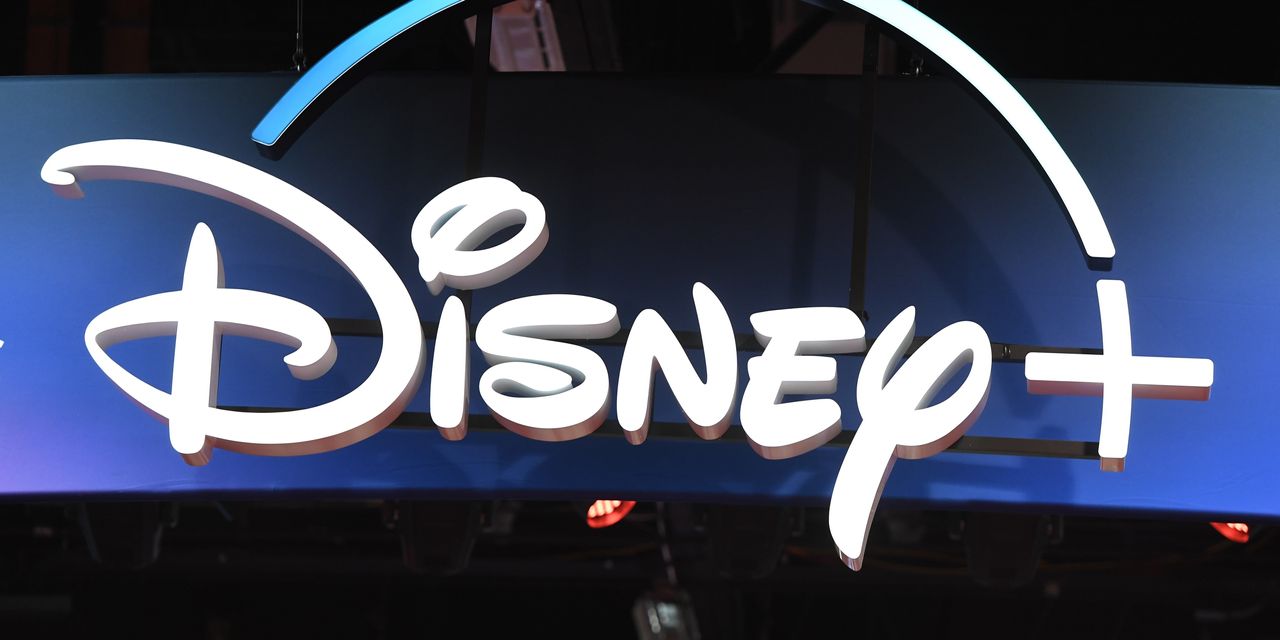
Walt Disney Co. benefitted big over the past year as it shifted its narrative toward streaming video, but now comes the flip side of that equation.
Subscriber additions for the Disney+ streaming service fell short of expectations in the March quarter, overshadowing positive trends across the business, such as better-than-expected profits and momentum in the theme parks segment.
Disney shares DIS, -4.26% are off nearly 5% in morning trading Friday.
While Disney’s management team reiterated that the company is on track to meet its target for 230 million to 260 million Disney+ subscribers by the end of fiscal 2024, Bernstein analyst Todd Juenger still had some concerns about subscriber progression. Disney+ added about 9 million new subscribers sequentially in the March quarter, but he estimates that the “core” Disney+ service—leaving out India’s Hotstar—added only 3 million, below the pace of 5 million that he believes will be required for the company to achieve its longer-term goal.
“[A]t this stage of the adoption curve, most investors want to see the pace running comfortably above the 5 million rate, not below (even fractionally),” he wrote. “Especially since the net adds pace will likely moderate as the base service gets bigger and incremental subs become harder to acquire and retain.”
Juenger has a market-perform rating on Disney’s stock and he lowered his price target to $163 from $167.
Cowen & Co. analyst Doug Creutz saw mixed signs in the Disney+ trends. While subscriber numbers fell short of the consensus view, Disney was coming off an “exceptionally strong” December quarter, and management indicated that the pace of subscriber growth in March exceeded what was seen in January and February. Still, he expected that the service should have benefitted from “high-quality” programming like the first two shows from the Marvel Cinematic Universe, as well as the movie Raya and the Last Dragon.
“Disney+ needs to add an average of at least 9 million subscribers per quarter for the next 14 quarters to reach management’s targets, and as the service gets more penetrated, the pace of adds is likely to slow down,” he wrote.
Creutz added that the “tension” for Disney’s stock “is a potentially faster recovery for Disney’s legacy businesses versus concerns about long-term [direct-to-consumer] sub goal attainability.” He has a market perform rating and $147 price target on the stock.
Others were more upbeat. Wells Fargo’s Steven Cahall wrote that “worriers” may be concerned that Disney could have a guidance cut “waiting in the wings” given that the company “neither changed nor reaffirmed” its additional long-term guidance beyond Disney+ subscriber metrics on the earnings call. He sees a “far less dramatic” picture, however.
“We think the addition of recent rights by ESPN/ESPN+, subscription bundles with Hulu and margin outperformance (potentially including accounting changes with re-segmentation) could cause a revisit to the DTC profitability outlooks and/or composite of the 300-350 million FY24 total DTC guidance,” he wrote. “To put it bluntly, we are not worried that Disney is trimming its long-term DTC targets six months after the investor event.”
Cahall rates the stock at overweight, though he lowered his price target to $209 from $219.
Morgan Stanley’s Benjamin Swinburne wrote that the Disney+ subscriber slowdown and management’s more cautious tone about the second half of the fiscal year weren’t particularly surprising given the impact that COVID-19 had on content production.
“The key titles and quantity of key titles really begin in F22 in earnest, building further into F23,” he wrote. “We remain confident in the F24 guidance, but continue to see net adds building over time,” whereas consensus expectations called for a more “front-end loaded growth curve” as Disney worked toward its fiscal 2024 subscriber target.
Swinburne reiterated his overweight rating and $210 price target on Disney shares, which have gained 60% over the past 12 months as the Dow Jones Industrial Average DJIA, +0.76% has risen 12%.





